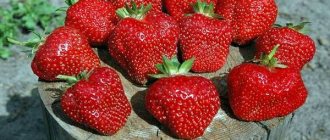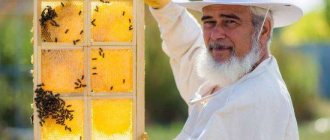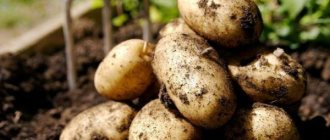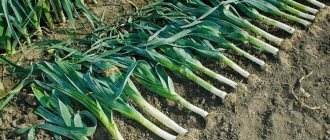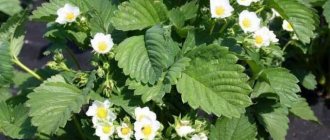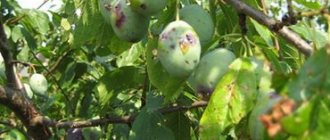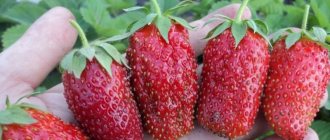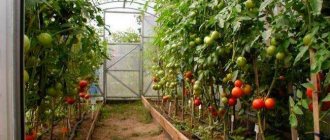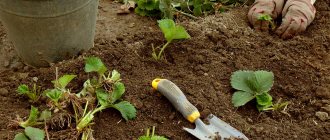Strawberries “Roxana” show excellent yield on the European berry market in the segment of late-ripening varieties and are recommended by experts for cultivation in industrial areas. Another variety from Italian breeders, which has been pleasing domestic farmers and gourmet gardeners for almost twenty years with its presentation, transportability and exquisite taste of the berries.
According to most gardeners, the Roxana strawberry (pictured) is the best commercial variety from the New Fruits line
We consider the most significant characteristics in the table:
| Parameter | Characteristic |
| Culture | Strawberry (Fragaria ananassa) |
| Ripening time | Middle or late |
| Fruiting | One-time (non-repairable) |
| Photoperiodic type | Short daylight hours |
| Productivity | High: up to 1.2 kg per bush, more than 100 c/ha; according to Ukrainian producers - 300-320 c/ha in open ground (when planting 50 thousand plants/1 ha) and up to 380 c/ha in film tunnels |
| Mass of berries | On average – 28-30 g, maximum – up to 63 g |
| Fruit shape | Regular, elongated cone-shaped |
| Berry color | Orange-red, with a glossy sheen |
| Pulp | Red, juicy, medium-dense |
| Tasting assessment | 4.7 points (out of 5) |
| Purpose | Universal |
| Educational ability | High (mustache green, medium pubescent) |
| Sustainability | The variety is relatively winter-hardy, moderately heat-resistant and drought-resistant; weakly affected by diseases |
| Productive life cycle | In amateur cultivation, it is recommended to update plantings after 3-4 years |
| Region of admission | North Caucasian (6) |
| Year of registration in the State Register of the Russian Federation | 2014 |
| Originator | New Fruits SAS (Cesena, Italy) |
Origin and official registration
Strawberry NF 205, registered in 2001 under the trademark “Roxana”, was bred by Italian breeders (Cesena), uniting two large nurseries: “Geoplant” and “Raggi”. Despite the fact that the variety was officially included in the State Register of the Russian Federation only in 2014, it appeared and was tested in many regions of Russia, as well as in Ukraine and Belarus much earlier.
According to professional farmers and gardeners, the important advantages of “Roxana” are:
- attractive presentation, taste, transportability and keeping quality of berries;
- high productivity, allowing the crop to be cultivated on an industrial scale;
- adaptability to open ground conditions in regions with a continental climate, as well as excellent results when growing off-season products in greenhouses (in soil or on substrate).
The large size of the berries and their high commercial qualities make harvesting easier
In Russia and post-Soviet countries, the production and sale of Roxana strawberry planting material is carried out by reputable nurseries and agricultural firms that have the appropriate license, because the rights to distribute the variety belong to the originator.
a brief description of
Advantages of the variety
- high yield (up to 100 kg per 1 hectare);
- the variety is ideal for indoor soil;
- very large berries of the 1st wave of harvest - up to 120 g;
- friendly return of fruits;
- good taste and aroma;
- universal fruits;
- even with a lack of sunlight and cool weather, the berries have a dessert taste;
- dense berries tolerate transportation well;
- moderate formation of whiskers with well-developed rosettes;
- good resistance to rot and pests;
- frost resistance up to -20 degrees.
Disadvantages of the variety
- the berries become somewhat smaller in the 2-3 wave of the harvest;
- fragility of planting - the life cycle of the bush is 4 years;
- berries can take on a bizarre shape, which reduces commercial quality;
- the variety is unsuitable for growing without shelter in snowless regions.
Roxana strawberries have many advantages, which arouses justified interest among gardeners in the peculiarities of planting and growing this variety.
Ripening dates and fruiting characteristics
A variety with short daylight hours, that is, one-time fruiting - non-repairing, belongs to the category of mid- or late-ripening: the first fruits ripen approximately 8-10 days later than “Honey” and “Alba”. The berries ripen evenly and uniformly.
Gardeners note that with intensive agricultural technology and favorable weather conditions, it is possible to obtain up to 1.5 kg of berries per bush, especially in the 2-3rd year of the growing season.
The bushes are vigorous, powerful, hemispherical, densely leafy. The leaves are large, dark green, medium wrinkled, concave and shiny, with wide sharp teeth along the edges. The middle lobes of the leaves have an oval-rhombic shape, and the stipules are narrow and short. The peduncles are long, thick, located below the level of the leaves, covering and protecting the few-flowered, semi-spreading inflorescences from return (spring) frosts during the growth process, then lie to the ground under the weight of ripening berries.
A large number and large size of berries, as well as active plant formation, quickly deplete the plant
At the first fruiting, no more than 1-2 flowers are formed on the inflorescence, which explains the large size of the berries (up to 63 g) . Whiskers are formed in large numbers, the rosettes are well developed. Large, white, untwisted flowers are bisexual, with high quality pollen, which ensures stable productivity and excellent presentation (category I class) of the bulk of the fruit.
Commercial and consumer qualities of berries
The berries are large, the average weight for all harvests is 28-35 g. The first fruits often have a non-standard “tulip-shaped” shape and reach maximum sizes (weighing more than 60 grams), which does not deprive them of their attractiveness and does not reduce their taste.
The first berries of “Roxana” are distinguished by their “tulip-shaped” shape and maximum size
In subsequent harvests, the number of berries ripening on each plant increases, while their weight decreases slightly towards the end of fruiting. In the main harvest, the fruits have uniform sizes and shapes: elongated-conical with a neck. Ripe berries have a smooth skin with a pronounced glossy sheen, orange or dark red. The shade depends on the weather and climatic conditions of the growing region and the level of intensity of agricultural technology.
Experts note the peculiarity of the variety for the full, uniform coloring of berries when grown in protected soil conditions, even at low temperatures and insufficient lighting.
The bulk of the fruits are uniform in size and shape
Small seeds on the skin are located superficially. The pulp is medium density, light red, the core is white, juicy, has a sweet-sour taste and a pronounced strawberry aroma. Professional tasting assessments of taste are 4.7 points (out of 5) , but most consumers find the taste “exclusively strawberry.”
The berries contain:
| Nutrients and beneficial substances | Quantity |
| Sahara | 6,1% |
| Acids | 0,7% |
| Vitamin C | 52.2 mg% |
The variety also earned high marks in terms of transportability and shelf life. The density of the fruit allows the harvested crop to be safely transported and stored, and also facilitates and speeds up the harvest itself, which provides Roxana with excellent prospects for commercial production on an industrial scale.
The culinary purpose of the berries is universal: they are good for fresh consumption, for preparing various desserts, and are suitable for all processing methods
Landing
A distinctive feature of the Roxana strawberry is its adaptability to growing both in open ground in a garden bed and in protected ground - under a light film cover or in a permanent greenhouse.
For outdoor cultivation, choose a suitable place:
- a well-lit area protected from the wind;
- elevation or slight slope towards the south - the main thing is that there is no stagnation of water;
- nutritious loose soil with a slightly acidic reaction.
Feature of the Roxana variety! Slight shading (or moving shadow) does not affect the quality of the crop. Genetically adapted for growing in the second half of summer, the plants easily tolerate a lack of sunlight and cool weather - the berries ripen even in not entirely comfortable conditions.
Roxana strawberries are planted in 2 terms:
- in autumn - in August;
- early spring - in April.
The bed for strawberries is prepared in advance: for autumn planting - 2-3 weeks in advance, for spring planting - for the winter.
- The area should be dug up and the roots of perennial weeds should be removed.
- For good strawberry growth, add organic matter (humus, compost) to the soil at the rate of 7-8 kg/sq. m or 1 linear meter of row when grown using the strip method and 0.5 l. ash.
- The rows are divided in the north-south direction with a row spacing of 60...70 cm. Strawberry seedlings are placed in a row with an interval of 30...35 cm.
- Bushes are planted without deepening.
- After planting, the plants are well watered.
To create optimal conditions in the root growth zone, the soil in the strawberry bed must be covered with a layer of organic mulch (straw, leaves, sawdust) at least 5 cm thick.
Sustainability and necessary agricultural practices
Manufacturers position the variety as unpretentious in care, capable of stable fruiting with standard agricultural practices. However, without fertilizing on poor soils, plants may tend to chlorosis. The originator claims resistance to diseases of the root system: verticillium wilt and heart rot, and tolerance to powdery mildew and angular spot (bacterial blight). However, experts and summer residents, in reviews of the Roxana strawberry, note the vulnerability of plants to anthracnose (black spot) during the hot, humid weather of May-June and draw attention to the stronger damage from spider mites compared to other varieties.
Experienced gardeners recommend carrying out preventive treatments with 1% Bordeaux mixture in early spring and after harvest.
The plant spends a lot of energy on setting and ripening a large number of fruits, as well as on active shoot formation. Therefore, for propagation, gardeners advise keeping several mother bushes, cutting off the flower stalks on each of them and leaving no more than three rosettes for seedlings. When planting, maintain a distance of 30-35 cm between seedlings to provide the bushes with sufficient nutrition area, uniform illumination and good ventilation. Since the flower stalks lie close to the ground under the weight of the berries, it is recommended to mulch the soil and provide drip watering to the plants.
Italian strawberry varieties are considered too “tender” for harsh winters in many Russian regions
Despite the declared winter hardiness of the variety, experienced gardeners believe that strawberry varieties of Italian origin freeze out in winters with little snow. Therefore, spruce branches, agrofibre or snow-retaining shields when grown in open ground in the continental climate of many regions of Russia (in particular, the central zone, the Moscow region), Belarus, the north-western and central regions of Ukraine are necessary for the guaranteed survival of the Roxana strawberry.
How to care
Spring care of berry bushes involves removing from the area all dried foliage and old flower stalks that remain from last year. When pruning, do not be afraid that only the central heart with green leaves may remain on the bush. It should be. You just have to try not to touch it. This is a future bush with the rudiments of buds, flowers and fruits. Cut branches must be burned. In this way, the development of various ailments and parasites can be prevented. You may also be interested in information about the description of the Jolie variety.
Strawberry care calendar.
Early in the spring, preventive treatment of bushes against diseases and parasites is carried out. For this purpose, it is worth using biological products such as Fitosporin and Phytocid. To combat pests, including mites, aphids and thrips, spraying the bushes with insecticides helps a lot. The most effective include Actofit and Actellik.
Also, Roxana strawberries must be treated with Bordeaux mixture and other preparations containing copper. This treatment should be carried out 2-3 times per season. This allows you to protect berry bushes from fungal diseases.
In spring, strawberries need feeding. To do this, nitrogen compounds are used. During the entire growing season, the berry will require a lot of nitrogen fertilizers. For spring feeding of strawberries, you can use nitrogen compounds in various ways - through watering or by scattering dry fertilizer. If the first method is chosen, then you need to take 10 liters of water and 20 g of ammonium nitrate. Water the beds with the resulting solution.
Watering remains very important for Roxana. It should be regular, especially after planting and during flowering. Approximately 10 liters of water will be needed per 1 m2. It is best to use the sprinkling method. In this case, the water should be settled and cool. It will also be useful to learn about how to treat this berry crop with iodine.
Video shows how to properly care for strawberries:
Loosen the soil in the bed where strawberries grow, you need to be extremely careful. The fact is that near the bushes the roots are concentrated close to the surface. Loosening allows you to retain moisture in the ground that has accumulated over the winter period for as long as possible.
While loosening the soil, it is worth simultaneously lightly hilling the bush from all sides. At the same time, make sure that the strawberry heart is not covered with soil. Loosening will also be an excellent preventive measure against weeds. And to get rid of them forever, you need to plant mustard between the rows of strawberries. But what remontant varieties with pink flowers look like and what they are called is described in detail here.
Reviews from gardeners
Rimma, 31 years old, Bryansk
I planted the variety “Roxana” at my summer cottage three years ago. The bushes are compact, the activity of plant formation is average. Fruits well in partial shade. The berries appear in mid-June. In the first year, the size and shape of the berries, similar to a tulip flower, were truly surprising. The pleasant smell of wild strawberries, especially after summer rain, spreads over the entire garden bed. The bush yields more than 1 kg of strawberries. Suitable for cooking, freezing and even drying.
Sergey, 34 years old, Vinnytsia region
One of the best varieties for growing in greenhouses and containers. The berry is dense, has a beautiful elongated shape, with a rich taste and pleasant aroma. We were very pleased with disease resistance, transportability and productivity.
Marina, 42 years old, Krasnodar
Italian variety, late ripening, popular among farmers. Weak heat and drought resistance can easily be attributed to the shortcomings of the plant. Under constant direct sunlight, seedlings literally burn out. It is necessary to water regularly and abundantly, and organize shading, especially in the southern regions.
Algorithm
- First you need to mark the place for future beds. To outline the boundaries, you can install a rope using sticks.
- After 0.3 m, holes should be made.
- Now you can install the seedlings in the hole.
- Immediately after installing the seedlings, you need to water them. For each hole - approximately half a liter of water.
Description of the variety
The Roxana berry bush has medium height and compact foliage. In this case, the plant belongs to the medium-leaved variety. It has rather long peduncles, and the inflorescences are concentrated at the same level as the leaves. From the first harvest, you can collect large berries, since the weight of one reaches 25-28 g. Further, the yield and weight of strawberries decrease slightly.
The color of the fruit is dark red or red. The achenes are superficial. The pulp is distinguished by its juiciness, dessert taste and pronounced strawberry aroma. The yield of the variety is average. If you completely follow all the rules of agricultural technology, you can get 95 kg of ripe fruits from one hundred square meters. The variety is distinguished by its friendly ripening.
But the plant’s winter hardiness is average, so in areas where there is little snow or frosty winters, the strawberries may freeze. The adaptation is average. The sockets are quite powerful and highly developed. They take root well. To get high-quality seedlings for the next year, you need to leave 3 rosettes on each bush, but no more. The Roxana variety is incredibly convenient for transportation. At the same time, the berries do not lose their attractive appearance and taste. It is also worth learning more about the Darenka strawberry variety, and what are the features of growing this variety of berries.
The video shows a description of the berry variety:
The variety also has strong immunity to the following diseases:
- powdery mildew;
- gray rot;
- strawberry mite
Another advantage of the Roxana variety is its ability to bear fruit 3-4 times per season. Thus, they can be classified as remontant.
Growing rules
You can plant or replant Roxana strawberries either in the spring or in the fall. The preferred time for planting seedlings is mid-late August. Young bushes will grow without problems, easily adapt to new climatic conditions, and next summer they will produce a bountiful harvest of sweet and aromatic strawberries.
In spring, you can plant strawberries immediately after the snow melts and the ground warms up to a temperature of +15˚С +18˚С.
To plant Roxana strawberry seedlings, you should choose a sunny area. It is advisable for the growing beds to be slightly raised. The soil should be loose, fertile, with low acidity. Light shading is acceptable for growing this variety.
The soil for planting strawberries must be prepared in advance. Fertilizers should be added to the soil 2-3 weeks before planting. The berry plant grows well on soil fertilized with humus, humus, and complex mineral fertilizers.
Planting seedlings
Strawberries should be planted in warm weather, towards evening. If the weather is too hot, postpone the event for a couple of days, or take care of shading young bushes during the first 2-3 days after planting.
Planting strawberries "Roxana" is very simple:
- In the prepared bed, make small holes 12-15 cm deep. The distance between the bushes should be 30 - 35 cm.
- Place the seedling strictly vertically in the planting hole and carefully straighten all the roots.
- Gently sprinkle the roots with soil and level the hole.
- You only need to water the strawberries with warm water.
Read also: Large-fruited strawberry varieties with photographs and descriptions
After planting, strawberry beds should be watered promptly with settled water as the top layer of soil dries.
Features of aftercare
Strawberry "Roxana", judging by the reviews of experienced gardeners, does not require close attention and special care. She needs to be provided with routine care, consisting of traditional activities:
- Timely and correct watering;
- Spring pruning;
- Accurate loosening;
- Weeding;
- Proper feeding.
Prevention against diseases and pests
Despite the fact that the “Roxana” strawberry, according to the description of the variety, photos and reviews from gardeners, is highly resistant to many diseases and most insect pests, it is still worth carrying out timely treatment for prevention. The first spraying can be carried out in early spring, when the air warms up to at least +10˚С +15˚С.
Before processing plants, you should familiarize yourself with a few tips:
- Among the large number of biological products, Fitosporin and Phytocid are especially popular.
- To combat insect pests (the most common are aphids, thrips, strawberry mites), strawberries are treated with insecticides. Actellik and Actofit have proven themselves to be excellent.
- Particular care should be taken when spraying strawberries with Bordeaux mixture or other preparations that contain copper. They will protect strawberry bushes from many fungal diseases.
Possible reasons for the decrease in yield
It is very sad, after making every effort and providing proper care, you get only a few handfuls of berries instead of the promised bountiful harvests. There are several reasons for the sharp decrease in the yield of Roxana strawberries:
- Thickened plantings;
- Incorrect and untimely watering;
- Overdose of fertilizers;
- Ignoring such important rules of agricultural technology as weeding, loosening, pruning;
- Untimely replanting and planting of old bushes.
Judging by the description of the strawberry variety “Roxana”, reviews and photos, only if you create suitable conditions and follow the rules of agricultural technology, you can count on getting a high yield.
Application area
Where can you use fresh strawberries? Diligent housewives will always find a use for them. In addition to eating fresh berries, aromatic strawberries are useful for:
- Preparation of summer compotes, fruit drinks and jelly;
- Preparation of dairy drinks: yoghurts, cocktails, ice cream, smoothies;
- Winter preparations in the form of preserves and jams;
- In the culinary field: for baking pies, cakes, desserts, preparing dumplings;
- Drying;
- Freezes in whole and crushed form;
- Preparation of liqueurs, tinctures, liqueurs and other strong drinks at home.
As you can see, the scope of application of Roxana strawberries is quite wide. Few people will refuse hot tea with fresh berries on cold winter evenings.
A brief description of the industrial strawberry variety “Roxana” will be presented to you by the author of the video
Care instructions
Caring for Roxana strawberries is quite simple. Basic care consists of the following activities:
- weeding and shallow but high-quality loosening of the soil in early spring;
- irrigation, the frequency and volume of which depends on soil moisture indicators. Irrigation during the flowering and ripening phases should be carried out directly at the root, very carefully;
- treating strawberries before flowering with metaldehyde (3 g per square meter): this will protect the plants from red ants, slugs, centipedes and snails;
- removing old leaves from plantings and spraying plants with Bordeaux mixture to combat spotting.
Improper watering, dense plantings, “overfeeding” plants with nitrogen and organic fertilizers, as well as the lack of autumn sanitary pruning are factors that provoke the defeat of strawberries by diseases and pests.
Reproduction
To expand plantings and restore fallen bushes, each gardener can independently grow the required amount of planting material.
Strawberry propagation methods
| Air layering | A mustache is left on the mother bushes, and the flower stalks are removed. As a result, more rosettes are formed and they take root much faster. By autumn, planting material with a well-developed root system is already ready |
| Dividing the bush | The old bush is cut into sections, the old dead part of the rhizome is removed and planted as a regular cutting. |
| Seeds | The method is troublesome, with not always predictable results. In practice, seed propagation is most often used for breeding work. |
Strawberries of the Roxana variety lend themselves well to vegetative propagation (by layering and dividing the bush), which allows you to obtain a daughter plant, a genetically exact copy of the mother bush. It is during vegetative propagation that the taste and smell of berries, yield are fully transmitted, and even traces of preventive treatment against fungal diseases are preserved.
Trimming
If the bushes grow too vigorously, they can be trimmed. In this case, the mustache and peduncles are pruned. If you prune bushes at the time of flowering, be careful and careful. The dry mass that has been removed must be taken away from the site and burned.
